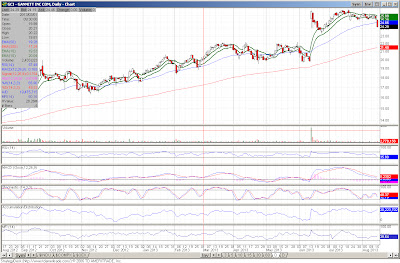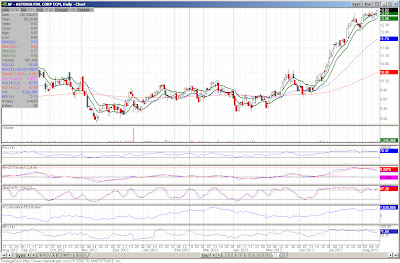The following article originally printed in
the WSJ highlights one important and often untalked about aspects of the US' and Western World's need to rebuild and upgrade the aging infrastructure. Namely that the push to improve and upgrade the infrastructure should primarily come from the private sector, as private investment and profit seeking people will construct and operate any project far more efficiently than any government entity.
By Larry Schweikart JR. and Burton Folsom JR.
For almost five years
now, President Obama has been making the argument that government
"investments" in infrastructure are crucial to economic recovery. "Now
we used to have the best infrastructure in the world here in America,"
the president lamented in 2011. "So how can we now sit back and let
China build the best railroads? And let Europe build the best highways?
And have Singapore build a nicer airport?"
In his recent economic speeches in
Illinois, Missouri, Florida and Tennessee, the president again made a
pitch for government spending for transportation and "putting people
back to work rebuilding America's infrastructure." Create the
infrastructure, in other words, and the jobs will come.
History says it doesn't work like
that. Henry Ford and dozens of other auto makers put a car in almost
every garage decades before the National Interstate and Defense Highways
Act in 1956. The success of the car created a demand for roads. The
government didn't build highways, and then Ford decided to create the
Model T. Instead, the highways came as a byproduct of the
entrepreneurial genius of Ford and others.
Moreover, the makers of autos, tires
and headlights began building roads privately long before any state or
the federal government got involved. The Lincoln Highway, the first
transcontinental highway for cars, pieced together from new and existing
roads in 1913, was conceived and partly built by entrepreneurs—Henry
Joy of Packard Motor Car Co., Frank Seiberling of Goodyear and Carl
Fisher, a maker of headlights and founder of the Indy 500.
Railroads are another example of the
infrastructure-follows-entrepreneurship rule. Before the 1860s, almost
all railroads were privately financed and built. One exception was in
Michigan, where the state tried to build two railroads but lost money
doing so, and thus happily sold both to private owners in 1846. When the
federal government decided to do infrastructure in the 1860s, and build
the transcontinental railroads (or "intercontinental railroad," as Mr.
Obama called it in 2011), the laying of track followed the huge and
successful private investments in railroads.

Agence France-Presse/Getty Images
Henry Ford in his new T Ford model in 1900.
In fact,
when the government built the transcontinentals, they were politically
corrupt and often—especially in the case of the Union Pacific and the
Northern Pacific—went broke. One cause of the failure: Track was laid
ahead of settlements. Mr. Obama wants to do something similar with
high-speed rail. The Great Northern Railroad, privately built by
Canadian immigrant James J. Hill, was the only transcontinental to be
consistently profitable. It was also the only transcontinental to
receive no federal aid. In railroads, then, infrastructure not only
followed the major capital investment, it was done better privately than
by government.
Airplanes became a major industry and
started carrying passengers by the early 1920s. Juan Trippe, the head of
Pan American World Airways, began flying passengers overseas by the
mid-1930s. During that period, nearly all airports were privately
funded, beginning with the Huffman Prairie Flying Field, created by the
Wright Brothers in Dayton, Ohio, in 1910. St. Louis and Tucson had
privately built airports by 1919. Public airports did not appear in
large numbers until military airfields were converted after World War
II.
No matter where you look, similar
stories come up. America's 19th-century canal-building mania is now
largely forgotten, but it is the granddaddy of misguided
infrastructure-spending tales. Steamboats, first perfected by Robert
Fulton in 1807, chugged along on all major rivers before states began
using funds to build canals and harbors. Congress tried to get the
federal government involved by passing a massive canal and road-building
bill in 1817, but President James Madison vetoed it. New York responded
by building the Erie Canal—a relatively rare success story. Most
state-supported canals lost money, and Pennsylvania in 1857 and Ohio in
1861 finally sold their canal systems to private owners.
In Ohio, when the canals were
privatized, one newspaper editor wrote: "Everyone who observes must have
learned that private enterprise will execute a work with profit, when a
government would sink dollars by the thousand."
In all of these examples, building
infrastructure was never the engine of growth, but rather a lagging
indicator of growth that had already occurred in the private sector. And
when the infrastructure was built, it was often best done privately, at
least until the market grew so large as to demand a wider public role,
as with the need for an interstate-highway system in the mid 1950s.
There is a lesson here for President
Obama: Government "investment" in infrastructure is often wasteful and
tends to support decaying or stagnant technologies. Let the
entrepreneurs decide what infrastructure the country needs, and most of
the time they will build it themselves.
Mr. Schweikart, a history professor
at the University of Dayton, is the co-author, with Dave Dougherty, of
"A Patriot's History of the Modern World" (Sentinel, 2012). Mr. Folsom, a
history professor at Hillsdale College, is the co-author, with his
wife, Anita, of "FDR Goes to War" (Threshold, 2011).







































